A point cloud survey is a process used to gather information about spaces and structures that can be put together to build highly accurate visualisations.
They are very popular with the architectural and construction industries as they allow for important data to be interpreted quickly and easily, allowing for better and more accurate project decisions to be made.
There are several key advantages associated with 3d point cloud surveys that you can read about in our earlier blog post. In this guide, we’ll be exploring the technical side of what these laser surveys are, what point cloud survey equipment is needed and how costs are broken down.
What is Point Cloud Technology?
Point cloud technology is the process of capturing spatial data using advanced laser scanning equipment. Point clouds interpret physical space through data points, these data points build up a visualisation of the space from each individual scan location.
The data gathered at each point of the cloud is then registered before being sent to the modelling software. During this process, the software can produce several digital outputs depending on the desired outcome and purpose of the survey.
The detail and accuracy of point cloud technology varies hugely. The final product can be configured with accuracy anywhere between millimetres and several meters. This depends on the amount of data gathered, the more that is gathered allows the survey to increase its accuracy.
For smaller projects, however, it is not always necessary to gather so much data. Gathering less brings the overall cost of a point cloud survey down and speeds the process up. It’s vital to understand the degree to which your project needs to be accurate before commissioning a survey.
What Are The Costs Associated With a Point Cloud Survey?
If you’re looking into using a point cloud survey on your next project then you’ll need to know how the finances work. One of the biggest benefits of using these surveys is that they help bring the overall costs of projects down – but by how much?
Be Clear on What is Required
Part of a point cloud survey’s overall cost is calculated by the time specialists need to spend on site. By minimising this time you can help to keep costs down.
To do this it is important to convey the level of detail needed. The higher the level, the higher the costs. For example, if you need accuracy to 1mm the amount of time taken to capture, register and process is far greater than if your project only requires accuracy to the nearest 10mm.
Including Colour Can Increase Costs
There is the option for including digital images within a survey. This creates a more realistic visualisation once completed and can greatly improve the look and feel of the final product. However, including colour can increase costs by up to 40%.
Using the Best Equipment
Another surefire way to ensure costs are kept to a minimum is through using the best laser scanning devices and software possible.
Propagation errors are a common problem with point clouds and provide regular challenges to surveyors. They are caused because point clouds are made up of multiple scans. The finished cloud is often made up of thousands of points, all of which must be placed together perfectly.
The errors are usually caused by scanner or software limitations. When putting together complex data sets, scans are placed on top of each other and all link back to a single master, or ‘home’, scan. The more steps placed between any of these scans and the home scan, the greater the margin for propagation error.
Whilst these errors cannot be removed, their impact can be minimised. This is done by using the best processing software available. Doing so will not only increase the accuracy of the finished survey but will help control costs by mitigating these errors.
Automated Processing Can Increase Efficiency
Automated point cloud processing software is a fairly new innovation that harnesses machine learning and vector analysis during the registration of targetless scans. This reduces the need for manual input and thus increases efficiency. It works by breaking down the registration process into several key areas; horizontal, vertical and rotational alignments.
The technology is still developing so there is always a level of manual quality checking that goes with this, however, innovation in this area is moving fast so it will not be long before this is common practice.
Contact us today to discuss your point cloud survey needs.
Categories: Technology
